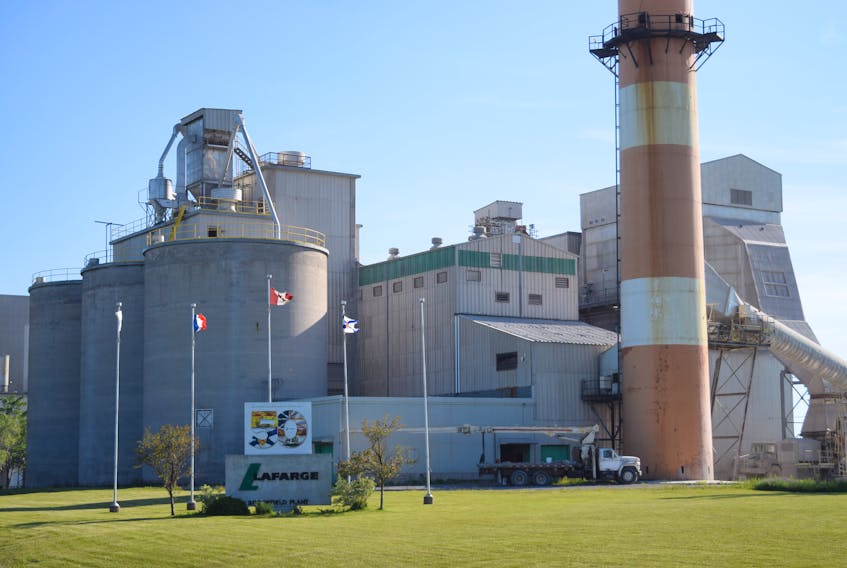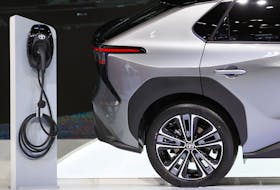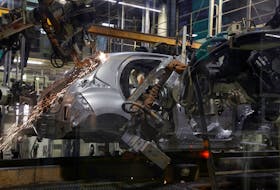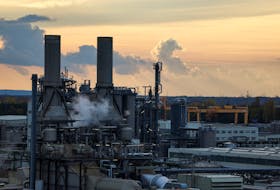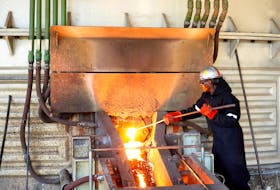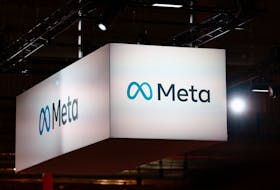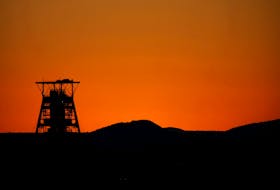Lafarge Canada is partnering with two universities on a $2-million study on the environmental benefits of introducing lower carbon fuels to its cement plant in Exshaw, Alta., 90 kilometres west of downtown Calgary.
“Our estimates show each 20 per cent incremental replacement of natural gas at the Exshaw cement plant with lower carbon fuels could result in the elimination of nearly 75,000 tonnes per year of CO2 (carbon dioxide),” Rob Cumming, environmental director at Lafarge, said in a news release Thursday.
Cumming said the 75,000-tonne reduction equates to taking 16,000 cars off the road annually.
Lafarge has already received provincial environmental approval in Nova Scotia for a one-year pilot project to burn more than 300,000 discarded tires in the kiln at its cement plant near Brookfield. The company has applied for an industrial approval for the project and will hear back from the Environment Department by early March. The project, which would require a $2-million plant upgrade, could be burning tires later this year.
Mark Gibson, an associate professor in Dalhousie University’s civil and resource engineering department, has been studying the effects of burning scrap tires for the past decade. Lafarge used Gibson’s research to support its pilot project application.
The company hopes to use the scrap tires as a very promising low-carbon fuel, which will replace some of its kiln consumption of petroleum coke and coal. The tires burn with a 30 per cent lower carbon intensity than coal, the company has said.
Those opposed to tire burning make the same arguments that they made twice in the past when the company made noises about burning tires. Burning tires, they maintain, will lead to increased stack emissions, including higher levels of toxic heavy metals and carcinogenic dioxins and furans.
The Alberta study will research eight lower-carbon fuels, including rubber and tire-derived fuel, non-recyclable plastics, construction and renovation waste, carpets and textiles, shingles, and treated non-treated wood products.
These fuels have been successfully used at other Lafarge cement plants in Canada and around the world.
Air quality studies predict minimal changes with introducing lower carbon fuels at the Exshawplant, the company said in the release.
Additional research by the partners — University of Calgary, Queen’s University, and Pembina Institute, a Canadian think-tank with offices in Toronto, Calgary, Edmonton and Vancouver — will measure the environmental impact of each lower carbon fuel compared with fossil fuels.
The project will also measure benefits of diverting potential fuels from landfills and determine the optimal
points in the cementmanufacturing process to inject each fuel.
“Lab simulations, environmental studies, economics and logistics reviews are already underway,” Exshaw plant manager Jim Bachman said in the Thursday release.
The Alberta research will be finalized by December 2019 with regular updates provided to the neighbouring communities.
“This project is an important step forward in understanding the opportunities for reducing GHG (greenhouse gas) emissions at cement plants in Alberta and across Canada,” said Steve Mac-Donald of Emissions Reductions Alberta.

